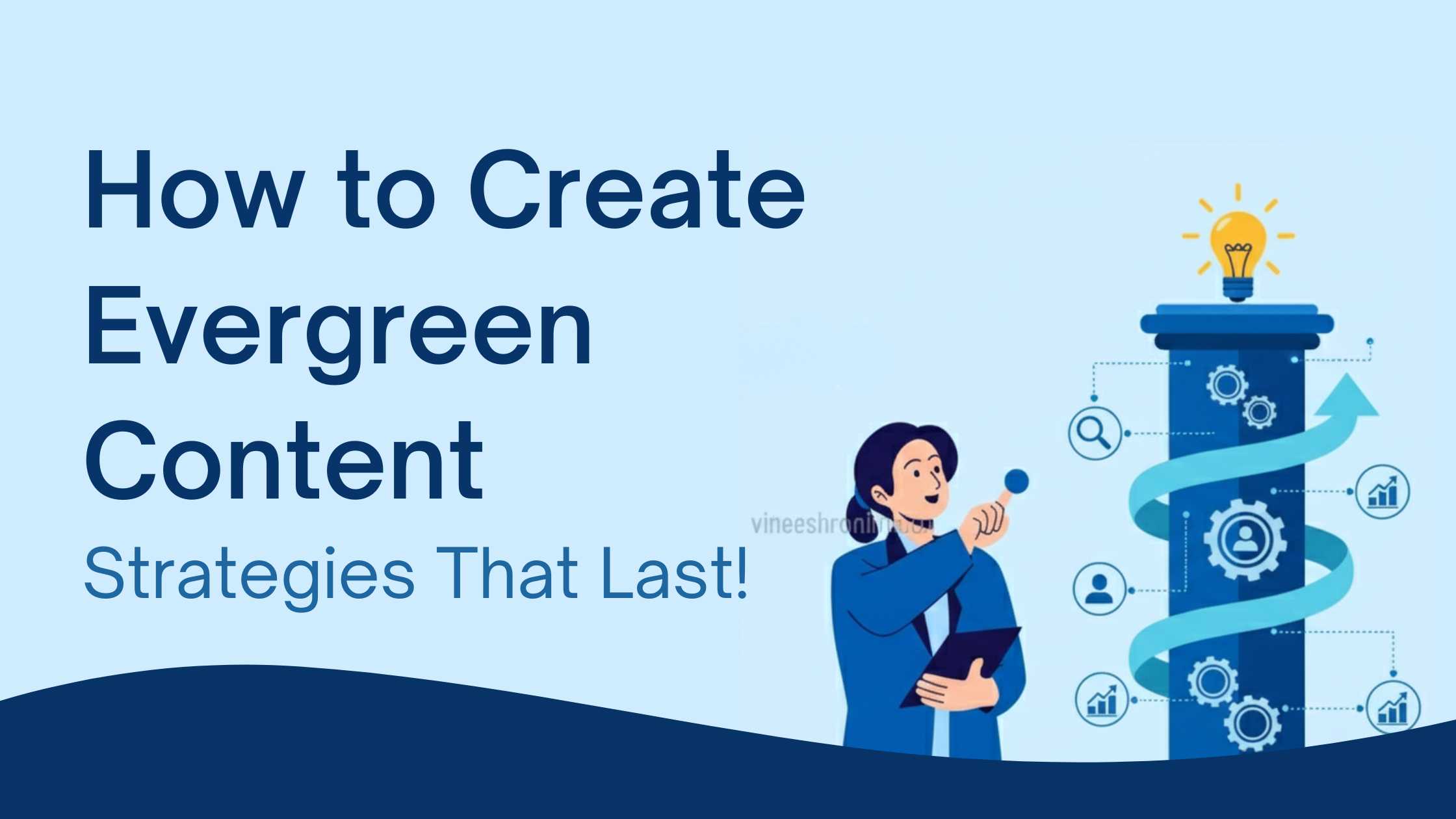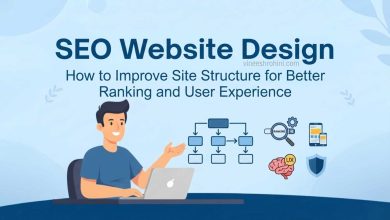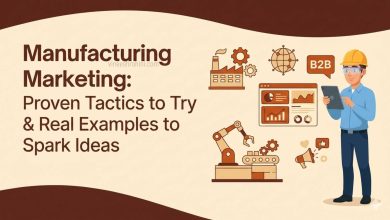Cross-Platform Marketing Automation in 2025 :(The Future of Unified Customer Engagement) : Comprehensive Guide
Cross-Platform Marketing : In the fast-paced world of digital transformation, businesses in 2025 face the pressing challenge of reaching and engaging customers across multiple online and offline channels. Consumers no longer restrict themselves to one touchpoint; instead, they interact with brands on websites, social media, mobile apps, email, search engines, and even smart devices.This complexity has given rise to cross-platform marketing automation, a strategy that allows companies to unify their efforts, streamline campaigns, and deliver personalized experiences across every channel. With the rapid advancement of AI-driven technologies, data analytics, and machine learning, cross-platform automation has evolved into a necessity rather than a luxury.
Table of Contents
In this blog, we will explore the scope, importance, and practical steps to implement cross-platform marketing automation in 2025, while understanding its challenges, benefits, and future trends.
Understanding Cross-Platform Marketing Automation

Cross-platform marketing automation refers to the use of advanced software and AI-driven systems that allow businesses to automate marketing tasks across multiple platforms simultaneously. Unlike traditional single-channel automation (such as only running automated email campaigns), cross-platform automation integrates a variety of channels—email, social media, SMS, push notifications, chatbots, paid ads, and even offline touchpoints—into one cohesive system.
For example, if a customer browses a product on your website, they could automatically receive a follow-up email, a remarketing ad on social media, and a push notification via your mobile app—all triggered by the same action. This synchronized approach ensures that the customer receives consistent messaging without feeling overwhelmed.
Also Read : Relationship Marketing : Building Long-Term Customer Connections for Business Growth in 2025
Why Cross-Platform Marketing Automation Matters in 2025
The marketing landscape has changed drastically in recent years. Here’s why cross-platform automation is more relevant than ever in 2025:
- Consumers use multiple devices – A single customer may browse on a laptop, check updates on a smartphone, and make a purchase through a voice assistant. Businesses must be present at every stage.
- Data-driven personalization – Personalization has become the foundation of digital marketing. Automation tools now leverage customer data to deliver hyper-relevant campaigns across all platforms.
- Time and cost efficiency – With automation, businesses save valuable time and reduce operational costs, while still scaling campaigns to thousands of users.
- Consistent brand messaging – Automation ensures brand consistency, no matter the platform.
- AI-powered decision making – Artificial intelligence in 2025 is more advanced than ever, enabling predictive analytics, customer segmentation, and automated campaign adjustments in real-time.
Core Components of Cross-Platform Marketing Automation

- Omnichannel Integration – Combining email, SMS, social media, paid advertising, and web push notifications into a single strategy.
- Customer Data Platforms (CDPs) – Centralized data storage that integrates customer data from multiple sources, ensuring a 360-degree view of customer behavior.
- AI and Machine Learning – Predicts customer intent, suggests content, and optimizes campaign timing.
- Personalization Engines – Deliver content tailored to customer preferences and behaviors.
- Analytics and Reporting – Advanced tools track performance across platforms, providing actionable insights.
Steps to Implement Cross-Platform Marketing Automation
Implementing cross-platform marketing automation in 2025 requires careful planning and execution. Here are the essential steps:
1. Define Your Marketing Goals
Before setting up automation, businesses must define clear objectives. Are you focusing on lead generation, customer retention, brand awareness, or sales growth? Each goal requires a unique automation workflow.
2. Choose the Right Marketing Automation Platform
Look for a platform that provides:
- Multi-channel campaign integration
- Real-time analytics
- Scalability for future growth
- AI-driven insights
- CRM integration
Some of the widely used platforms in 2025 include HubSpot, ActiveCampaign, Salesforce Marketing Cloud, and Zoho Marketing Plus.
3. Segment Your Audience
Effective cross-platform automation relies on audience segmentation. Categorize users based on demographics, buying behavior, engagement level, and interests to create highly targeted campaigns.
4. Design Omnichannel Campaigns
Create campaigns that span multiple platforms but remain connected. For example:
- A customer who abandons a shopping cart receives a reminder email, a social media retargeting ad, and an app push notification.
- A subscriber downloading an ebook triggers a follow-up email sequence plus LinkedIn ads.
5. Leverage AI for Personalization
Use AI tools to send the right message at the right time. For example, predictive algorithms can recommend products based on browsing history, while chatbots provide real-time assistance.
6. Automate Workflows
Workflows streamline repetitive tasks such as sending welcome emails, scheduling social posts, or updating CRM records. A robust workflow ensures that no lead or customer falls through the cracks.
7. Monitor, Analyze, and Optimize
Measure campaign success through KPIs such as conversion rates, engagement levels, ROI, and customer lifetime value (CLV). Use insights to refine your strategy continuously.
Benefits of Cross-Platform Marketing Automation

- Enhanced Customer Experience – Customers receive consistent, personalized, and timely interactions across multiple channels.
- Improved ROI – Automation reduces manual effort and ensures better targeting, resulting in higher returns.
- Scalability – Businesses can scale campaigns to thousands of users without additional human effort.
- Time Efficiency – Frees up marketing teams to focus on creative strategy and innovation.
- Data-Driven Decision Making – Real-time analytics provide valuable insights into consumer behavior.
- Increased Sales and Retention – Automated re-engagement campaigns reduce cart abandonment and improve customer loyalty.
Challenges of Cross-Platform Marketing Automation in 2025
While automation offers immense potential, it also brings challenges:
- Data Privacy Regulations – With stricter global privacy laws, businesses must ensure compliance when collecting and using customer data.
- Integration Complexity – Bringing multiple platforms under one roof requires significant technical expertise.
- Over-Automation Risks – Excessive automation may make customer interactions feel robotic instead of genuine.
- High Initial Costs – Setting up advanced platforms and training staff can be expensive.
- Maintaining Personalization at Scale – Personalizing at large scale while avoiding generic messaging remains a challenge.
Cross-Platform Marketing Automation Strategies for 2025
- AI-Powered Chatbots Across Platforms – Deploy bots on websites, WhatsApp, and social media for real-time engagement.
- Voice-Activated Marketing – Optimize campaigns for smart speakers and voice assistants.
- Hyper-Personalized Email Campaigns – Triggered by customer behaviors across different platforms.
- Unified Social Media Scheduling – Automate and schedule posts across FB, Insta and LinkedIn while analyzing engagement in one dashboard.
- Dynamic Retargeting Ads – Deliver personalized ads across G, Meta, and programmatic networks.
- Predictive Lead Scoring – Use AI to prioritize high-value leads across platforms.
- Customer Journey Mapping – Automate experiences that adapt to user behavior across touchpoints.
Buy Now : Ecommerce Website
Future of Cross-Platform Marketing Automation in 2025 and Beyond
Looking ahead, the future of cross-platform automation will be shaped by AI, blockchain, AR/VR, and next-gen data analytics. Here are some key trends:
- Deeper AI Integration – Campaigns will become self-optimizing, making real-time decisions without human intervention.
- Blockchain-Powered Data Security – Ensures transparency and trust in customer data handling.
- Augmented Reality (AR) Campaigns – Automated AR-based ads will allow customers to virtually experience products.
- 5G-Powered Instant Engagement – Faster connectivity will enable seamless cross-platform experiences.
- Ethical Automation Practices – Businesses will prioritize customer trust by avoiding intrusive tactics.
Key Points Summary
- Cross-platform marketing automation in 2025 ensures businesses can engage customers across multiple channels seamlessly.
- AI, machine learning, and customer data platforms are the foundation of modern automation.
- Benefits include improved customer experience, higher ROI, scalability, and better personalization.
- Challenges include data privacy laws, integration complexity, and the risk of over-automation.
- Future trends include blockchain security, AR-driven campaigns, voice-activated marketing, and predictive analytics.
Conclusion

Cross-platform marketing automation in 2025 has moved from being an optional marketing tool to becoming the core of digital customer engagement strategies. In an era where customers expect instant, personalized, and seamless interactions across multiple touchpoints, businesses that adopt cross-platform automation are well-positioned to thrive. By leveraging AI, machine learning, predictive analytics, and omnichannel strategies, companies can not only enhance customer experiences but also increase sales, boost ROI, and stay competitive in an increasingly digital-first world.
Buy Now : Content Marketing Pro Blueprint
The businesses that succeed in the coming years will be those that embrace automation with a human touch, maintaining personalization and authenticity while harnessing the power of advanced technologies. Cross-platform marketing automation is not just about technology—it’s about creating meaningful connections with customers, wherever they are.



